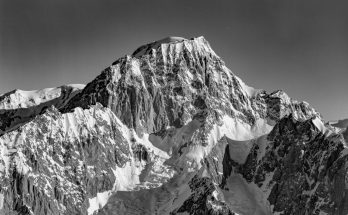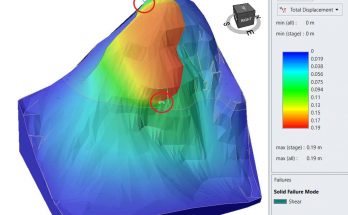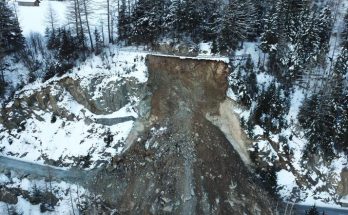Romain Chenillot
Co-supervisors: Prof. Michel Jaboyedoff, Prof. Vincent Labiouse, Dr. Mario Sartori
This analysis of rock falls hazards relates to cliffs of the Grand Bois du Ban, located by the city of Lavey, in the canton of Vaud, Switzerland. The activity of this site was established on the basis of observations of blocks and traces of impacts carried out in wood. The purpose of this study is to determine the various elements characteristic of the phenomenon, thus allowing the development of hazard maps based on two softwares of trajectographic modelings and two methods of zoning.
The cliffs are located in the Helvetic’s tectonic whole, on the level of the Morcles’ klippe. They are made primarily of massive and compact limestones. It was made possible to characterize five families of discontinuities, and the stratigraphy based on the structural analysis, the field’s observations and the LiDAR scans treated by Coltop3D. The whole zone is affected by a rather important fracturing, but also by the presence of folds.
Field’s observations and LiDAR analysis made it possible to determine three formations processes of dihedral slip and a process of planar slip related to stratigraphy. Matterocking software could give potential rock instabilities on the basis of these observations.
At this point, the trajectographic’s tests is feasible. Two softwares were used. Initially Rocfall, limited to a modeling 2D, then Rockyfor3D allowing the taking into account of three-dimensional trajectories. The comparison of the results between these two models shows good similarities of the blocks stopping limits. Although the disparities of the energy intensities are sometimes important.
Hazard maps were carried out according to two methodologies respectively the Matterock Modified based on the results of Rocfall and the new Cadanav methodology based on Rockyfor3D. The analysis of the results shows a less favourable mapping for Modified Matterock, especially if blocks of great volumes are taken into account with one great period of return. This element brings the fore on one of the essential differences between the two methodologies. Namely taking into direct account the period of return in the case of Cadanav, which is left aside using Modified Matterock.
Lastly a second series of hazard maps was carried out in order to test the impact of the variation of a parameter on the results of mappings using the Original Matterock which takes all blocks into account. This differs from the Modified Matterock withdraws the 10 % of the modeled extreme blocks. Concerning Cadanav, the periods of return values estimated based on field’s observations were divided by 5. The results show important mapping variations, illustrating these methods great sensitivity to the fluctuation of its parameters mainly based on estimations.
As a conclusion of this analysis of rock falls the village of Lavey is located out the dangerous perimeter. However all limits previously mentioned must be taken into account and decisions made accordingly.



